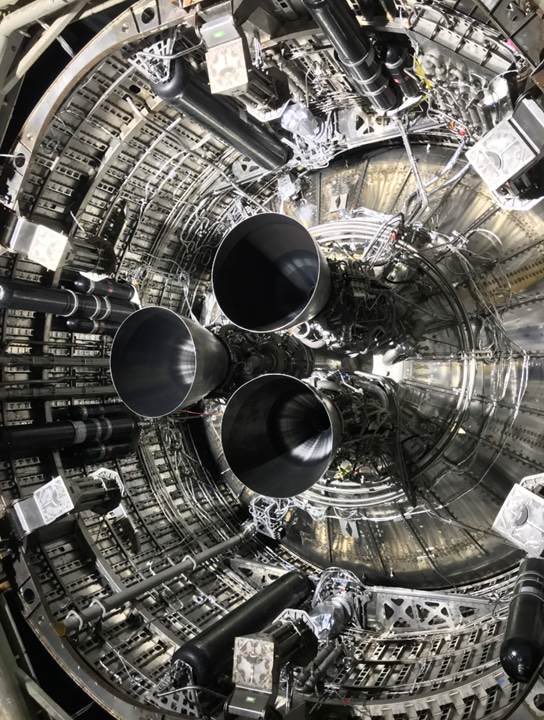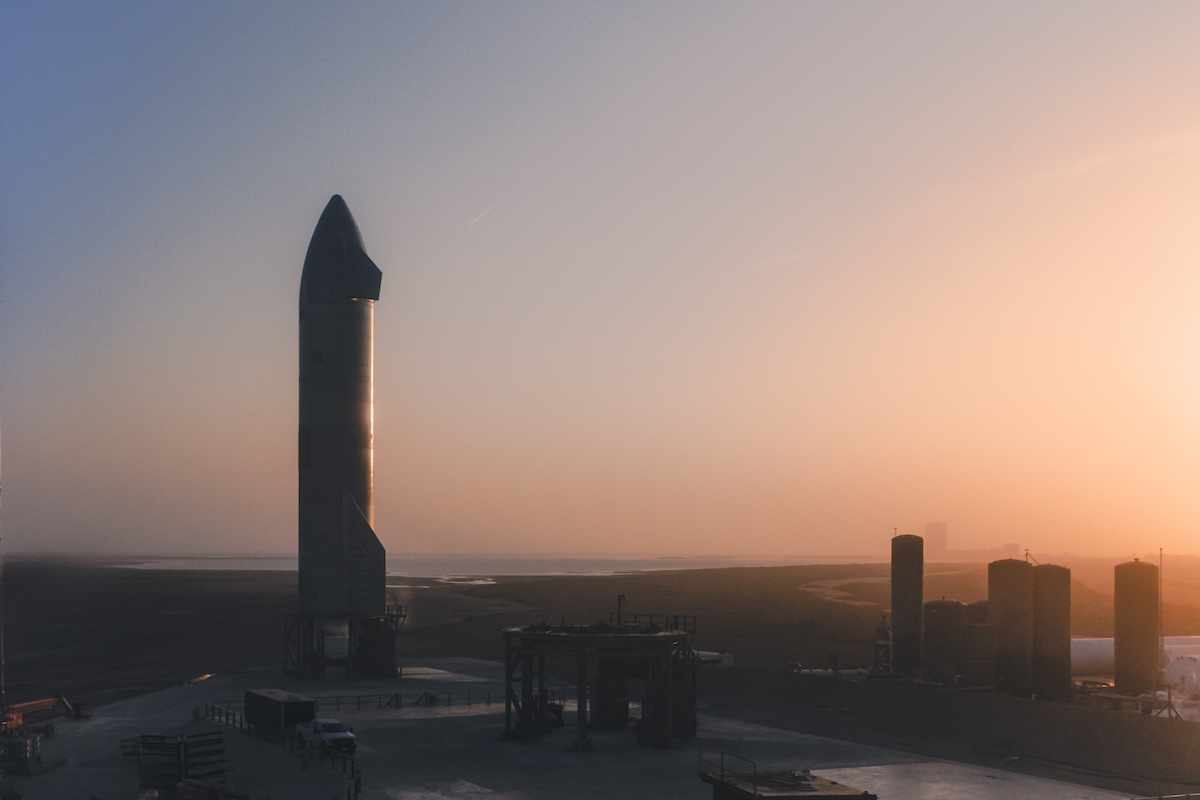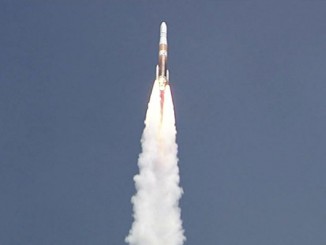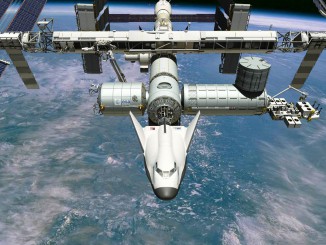
SpaceX founder Elon Musk said Monday that a “relatively small” methane leak caused the explosion of the company’s latest Starship test rocket last week on an experimental flight over South Texas.
The 164-foot-tall (50-meter) Starship test vehicle, known as Serial No. 11, took off from SpaceX’s development facility near Brownsville on March 30 for an atmospheric test flight to an altitude of about 33,000 feet, or 10,000 meters.
Three Raptor engines, each consuming super-chilled methane and liquid oxygen propellants, powered the stainless steel rocket off its launch mount with more than a million pounds of thrust.
After climbing straight up above a dense layer of fog, the Starship shut down each of the Raptor engines in sequence, as planned, before pitching over horizontally to begin a controlled descent back to the ground. Aerodynamic flaps helped stabilize the giant vehicle as it fell back to Earth before the Raptor engines were supposed to reignite and flip the rocket back vertical for touchdown on a landing pad next to the Starship’s launch site.
Dense fog prevented clear views of what happened, but an on-board camera view on SpaceX’s live webcast froze as the Raptor engines fired up for landing. Other camera views showed debris showering the test site, which Musk calls Starbase, after a thundering boom crackled across the facility.
Light debris fragments from the Starship apparently traveled as far as 5 miles (8 kilometers) from the launch site and landed in a public viewing area, although the material may have been shed from the rocket as it climbed toward the apex of its trajectory, and not during the explosion just before landing.
Musk tweeted Monday that the ascent phase of the Starship SN11 test flight went according to plan. The transition to horizontal and control during its free fall back to Earth were also good, he said.
But a small methane leak led to a fire on one of the vehicle’s Raptor engines and “fried” part of an avionics system. That caused a “hard start” in the engine’s methane turbopump at the beginning of the landing burn, Musk said.
“This is getting fixed six says to Sunday,” Musk tweeted.
Ascent phase, transition to horizontal & control during free fall were good.
A (relatively) small CH4 leak led to fire on engine 2 & fried part of avionics, causing hard start attempting landing burn in CH4 turbopump.
This is getting fixed 6 ways to Sunday.
— Elon Musk (@elonmusk) April 5, 2021
The explosion March 30 was the fourth Starship vehicle in a row SpaceX has lost since starting high-altitude test flights in December.
A hard landing on an otherwise-successful Dec. 9 Starship test flight was caused by low pressure from header tanks feeding the vehicle’s Raptor engines for the critical burn just before touchdown, and one of the Raptor engines failed to reignite for the landing burn on a test flight Feb. 2.
The SN10 rocket achieved the first soft landing of a full-size Starship vehicle at the end of a March 3 test flight, but the rocket exploded minutes later.
SpaceX is developing the Starship vehicle as the company’s next-generation rocket and crew and cargo transporter to eventually replace the Falcon 9 launcher and Dragon capsule. The Starship vehicle now being tested in Texas will form the upper stage of the giant new rocket, which will stand nearly 400 feet (about 120 meters) tall with the Starship stacked on top of a huge booster stage.
The full-size rocket configured for orbital missions will have 28 Raptor engines on its first stage, and six Raptor engines on the Starship upper stage. SpaceX says it will be capable of delivering more than 220,000 pounds, or 100 metric tons, of payload mass to low Earth orbit.
Once in orbit, the Starship will be able to receive a fresh supply of methane and liquid oxygen propellants to continue on and carry its heavy cargo — and eventually people — to more distant destinations, such as the moon and Mars, according to SpaceX
The booster stage, known as the Super Heavy, and the Starship vehicle will be fully reusable to limit launch costs.
But first SpaceX needs to master the Starship landing maneuver, which is much different than the way SpaceX lands its operational Falcon rocket boosters. SpaceX also plans to begin test flights of the first Super Heavy booster prototypes.

SpaceX’s next Starship rocket, designated SN15, is preparing to roll out from its assembly hangar at the test site near Boca Chica Beach in South Texas. Once it’s on the launch pad, SpaceX engineers will run through a series of checkouts, and likely attempt a fueling test and a hold-down test-firing before proceeding to a test flight.
The Starship production complex is located a couple of miles inland from the launch and landing pads.
SpaceX skipped building SN12, SN13, and SN14 in favor of an updated Starship configuration that will debut with SN15.
“It has hundreds of design improvements across structures, avionics/software & engine,” Musk tweeted tweeted last week. “Hopefully, one of those improvements covers this problem (with SN11). If not, then retrofit will add a few more days.”
SpaceX aims to launch the first fully-stacked Super Heavy and Starship in on an orbital launch attempt from South Texas in July. “That’s our goal,” Musk tweeted.
An orbital launch attempt by July is an aggressive goal, like many schedules outlined by SpaceX’s hard-charging founder and chief executive.
The next major technology update to the Starship vehicle will come with SN20 later this year, according to Musk.
“Those ships will be orbit-capable with heat shield & stage separation system,” Musk tweeted. “Ascent success probability is high. However, SN20+ vehicles will probably need many flight attempts to survive Mach 25 entry heating & land intact.”
SpaceX has stacked the first Super Heavy booster testbed, known as BN1, at the South Texas launch site. But Musk said that vehicle is a pathfinder to try out manufacturing and production techniques, and will not fly. Teams are building the second Super Heavy prototype — BN2 — for atmospheric test flights before proceeding with construction of BN3 for a potential orbital launch attempt.
Email the author.
Follow Stephen Clark on Twitter: @StephenClark1.



